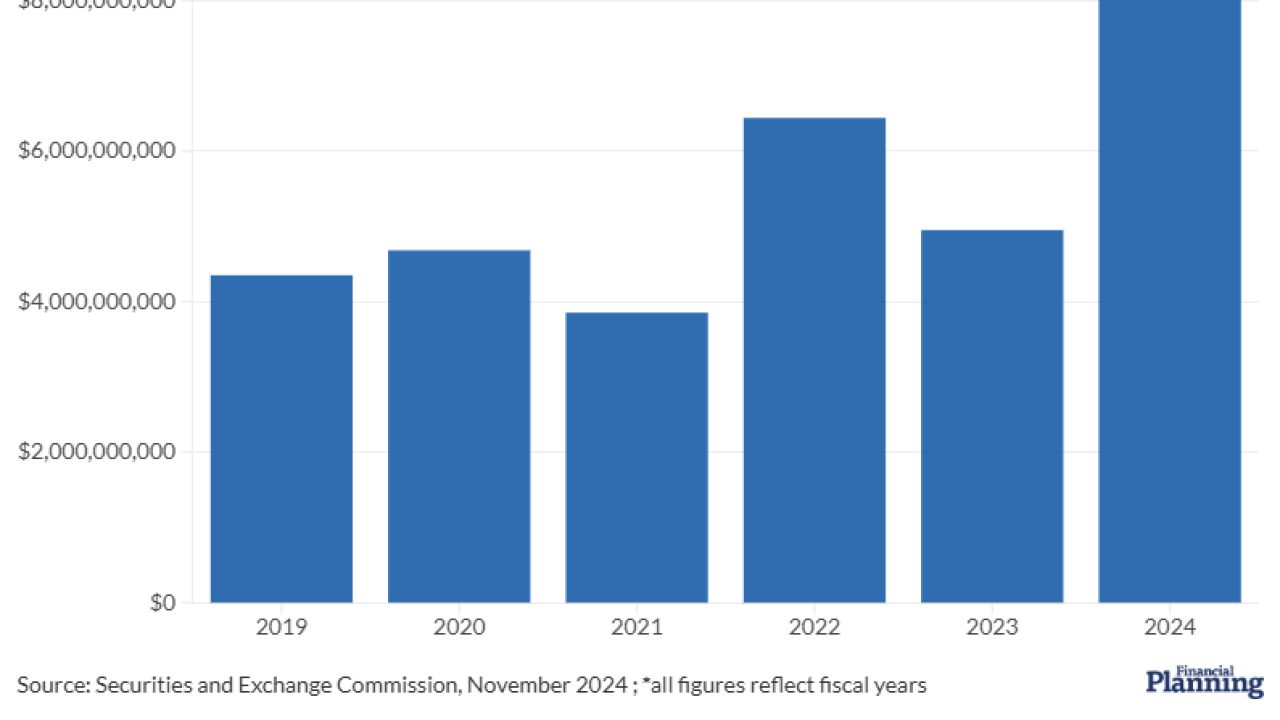TPMs are gearing up to adapt to the DoL fiduciary rule, which poses new challenges in product mix, information management, product selection, training, and litigation risk.
For the 7,000-plus advisers affiliated with TPMs, this rule represents a paradigm shift in how they approach their jobs. Gone are the days of the sales-driven culture that shaped a generation of advisers. Indeed, the adviser's job is about to get harder, and some old dogs are going to have to learn new tricks in order to survive.
Some advisers, of course, will leave the industry rather than adapt, which will make recruitment even more important as firms look to replace those departing advisers. TPMs will have a large role to play in assisting firms in this area. Many TPMs employ centralized recruiters that help place advisers in banks and credit unions, greatly expanding the recruiting reach of these financial institutions beyond what they could hope to manage on their own.
In addition to recruiting efforts, TPMs also look poised to play an important role in providing training, technological support, and array of products needed to help current advisers make this transition.

But this is not the TPM industry’s first rodeo. There certainly have been other challenges along the way. Consider just a few of them, as well as how they responded.
TPMs trace their roots to firms that started helping Savings & Loans sell annuities and provide securities brokerage in the early 1980s. Financial institutions wanted more fee income as they saw non-bank firms siphoning off deposits and customers.
An early challenge was the resistance by some banks to having salespeople on the branch floor who were not employees of the bank. In response, the industry secured a no-action letter from the SEC that permitted W-2 employees of the bank to be registered representatives of an unaffiliated broker-dealer, a structure that survives to this day. Today, most advisers affiliated with TPMs are what came to be called dual employees.
Then the S&L crisis rocked the industry. Between 1986 and 1995, one-third of the more than 3,200 S&Ls failed. Many TPMs saw their best S&L partners go into receivership or get acquired by commercial banks, which often were not interested in selling annuities. But faced with the need to reduce their balance sheets and run off deposits, many S&Ls turned to TPMs to convert their deposits into annuity fee income. (Some old-timers still refer to this period as a Golden Age for TPMs.)
Another early challenge was a concern among bank executives that selling investments would lower the bank’s deposits. To combat this fear, some TPMs started paying higher commissions for sales paid by funds from outside the bank. It took years for most bankers to be convinced by the evidence that developing an investment relationship with customers increased their loyalty to the institution and encouraged them to move more of their investable assets to the bank.
Percentage Leases. Looking back even further, during the 1950s the independent insurance agents’ lobby had managed to get laws passed in most states prohibiting banks from selling insurance, including annuities. With a few quirky grandfathered exceptions, this meant that banks could have a registered representative in their branches, but the adviser could not sell annuities, which accounted for the lion’s share of investment sales in financial institutions. To solve this problem, the industry came up with workarounds such as the percentage lease, where the TPM leased space in the branch, provided the adviser, and paid the bank a percentage of the revenue that the adviser produced.
This was the innovation that really sparked the “bank channel" as most major banks started offering investments in their branches. In the early 1990s banks such as Citibank, Wells Fargo, Bank of America, Chase, PNC, and Key all joined up with TPMs. But as the business grew, the major banks wanted more control, and years of lobbying and litigation culminated in banks winning the right to sell insurance. Almost overnight, the major banks terminated their agreements with their TPM partners. The TPMs responded to this challenge by seeking out smaller banks that did not have the wherewithal to start their own broker- dealer. Of course, some of these “smaller” banks grew large enough to bring their investments services in house, forcing TPMs to seek out still smaller partners, and so on.
Over the past few years, we've seen a few exceptions as some medium-sized banks have outsourced their broker- dealer to a TPM again. We expect the fiduciary standard to add impetus to this trend.
Industry Consolidation. The consolidation of the TPMs mirrors the consolidation of the financial institution industry. In 1984, there were over 14,000 chartered banks. Today there are fewer than 6,300. Throughout their history TPMs have had to cope with the challenge of seeing some of their partner institutions acquired by other banks, which might have a relationship with a competitor TPM.
Yet another continuing challenge is bank management commitment to the investment services business. TPMs grouse about the sizable number of financial institution partners who seem to offer investment services as a defensive measure, or who will not invest in the business. And turnover in bank executives means that the advocate for investment services at the top of the house might soon be replaced by a skeptic. Candidly, TPM executives say that banks seem to change management as often as respectable people change underwear. While it's not that dire, about two dozen financial institutions exit the wealth management business in a typical year.
Overall, we view the history of TPMs as one characterized by challenges caused by regulatory restrictions, industry consolidation, market fluctuations, shifting bank strategies and perception of the investment services business. So while we should expect some shakeout from the disruptive event--the fiduciary issue--we also foresee most TPMs emerging stronger than before.
Indeed, by providing the training and recruitment services needed in this new world, the TPMs should be able to continue to present a strong value proposition to their financial institution partners and affiliated advisers, and may even strengthen that proposition in the face of industry disruption.





